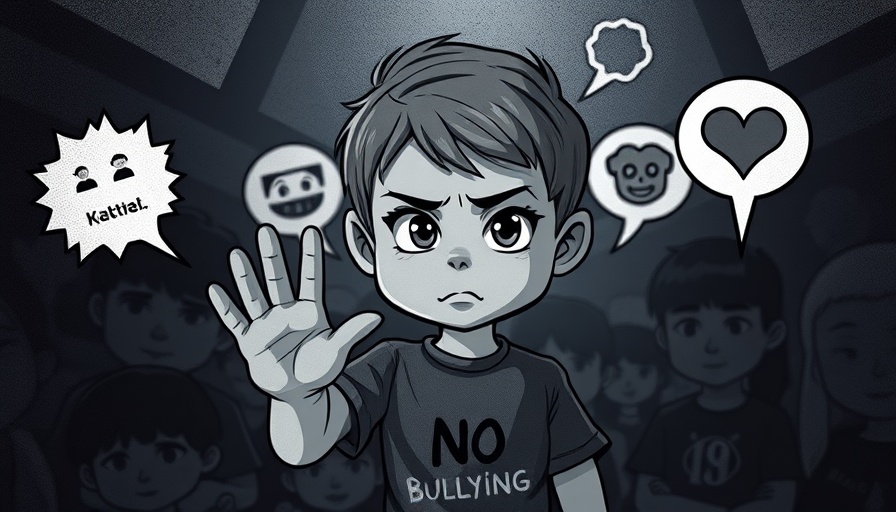
Understanding the Roots of Bullying: What Parents Should Know
Bullying has become a pressing issue in today’s schools, with deep-seated implications for both victims and perpetrators. A psychiatrist recently shared insights into the psychology behind bullying, emphasizing the lamentable reality that "hurt children hurt others." This statement encapsulates a vital truth: those who engage in bullying behavior often do so as a result of their own emotional distress. For parents, understanding this connection is crucial in effectively addressing and preventing bullying.
Historical Context: The Evolution of Bullying
To grasp the phenomenon of bullying, it's important to consider its historical context. For decades, bullying has been viewed primarily as a rite of passage during childhood. However, this outdated notion neglects the psychological turmoil many bullies experience, often rooted in their own trauma or instability at home. Research shows that a significant number of bullies come from environments where aggression and neglect are prevalent. Therefore, fostering a supportive and empathetic surrounding is foundational for combating bullying.
Social Connections: The Impact of Community and Family
Children are deeply influenced by their social connections, and family dynamics play a crucial role in shaping their behavior. A child's interaction with parents, peers, and teachers can either foster kindness and understanding or breed anger and aggression. Parents are encouraged to engage openly with their kids regarding feelings and experiences at school, promoting a culture of empathetic dialogue. By doing so, children can learn to express their feelings healthily instead of resorting to harmful behaviors.
Taking Action: Strategies for Parents
So, how can parents effectively intervene? First, maintaining an open line of communication with children about their daily experiences is vital. Establishing trust means children will be more likely to confide in parents about what they witness or experience. Workshops and community programs focusing on relationship-building skills for children can also serve as practical tools for parents aiming to nurture empathy in their kids.
Current Trends: The Role of Technology in Bullying
In the digital age, bullying has transcended the playground, manifesting in various forms of cyberbullying. When discussing bullying, parents must also address the implications of social media. Studies reveal that children exposed to frequent aggression online are more likely to exhibit similar behaviors in real life. Setting screen time limits and teaching children about online empathy can help mitigate these trends. Implementing parental controls and educating kids on recognizing inappropriate online behavior can create safer social media experiences.
Future Insights: The Path to Healing
Instead of solely punishing bullying behavior, parents and educators should adopt restorative practices that encourage healing for both the victim and the bully. Programs focusing on emotional intelligence and communication skills will help children mend interpersonal relationships and recognize the importance of kindness. Ultimately, investing in emotional well-being initiatives can significantly affect how future generations deal with conflict and build connections.
Common Misconceptions About Bullying
One common misconception is that bullying primarily stems from 'bad' kids. In reality, understanding the emotional landscapes that shape a child's actions provides a fuller picture. Educating parents about the psychological factors contributing to bullying can help dismantle stigma and foster more constructive conversations about empathy and support. By addressing these misconceptions, parents can better contribute to a culture of understanding, which plays a crucial role in reducing bullying incidents.
Conclusion: Creating a Supportive Environment
For parents, the dialogue surrounding bullying is not merely reactive. It calls for proactive engagement and understanding of the emotional complexities involved. By fostering supportive environments and open communication, we can effectively combat bullying while cultivating kindness and empathy in future generations. With community support and educational resources at their disposal, parents can make a significant difference.
 Add Row
Add Row  Add
Add 




Write A Comment